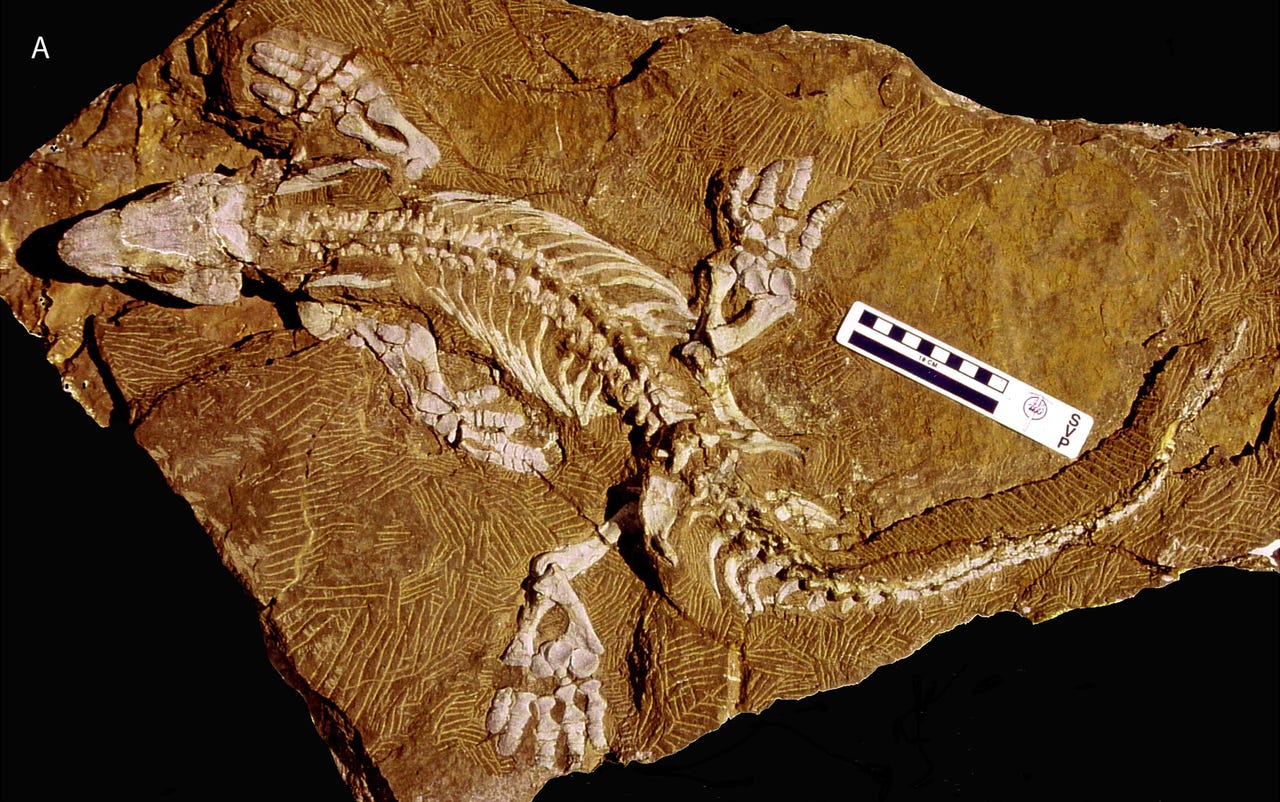Fossil bot emulates how extinct animal walks based on footprints


Robots may be a hallmark of future tech, but researchers in Europe are using autonomous machines for something decidedly more archaic: Emulating extinct animals to figure out how they walked. Scientists from Swiss university EPFL and Humboldt-Universität in Berlin are using 300-million-year-old fossilized footprints in conjunction with robots and computer models to emulate the gaits of extinct animals in order to determine vertebrate locomotion strategies.
The animal in question is Orobates pabsti, an ancient vertebrate that's something like a cross between a lizard and a frog.
"Orobates is an ideal candidate for understanding how land vertebrates evolved because it is in the lineage leading to modern amniotes [reptiles, birds, and mammals]. These animals formed in eggs laid on land and became largely independent of water," says John Nyakatura, a professor at Humboldt-Universität.
The scientists started by creating a digital model of Orobates skeleton and borrowing biomechanical insights from living animals with sprawling postures, such as iguanas. They used the model first in kinematic computer simulations. At the same time, scientists from EPFL's Biorobotics Laboratory – with support from research consortium NCCR Robotics, which is knocking it out of the park with cool robotics projects – built a robot called OroBOT to calculate the physics of how Orobates walked.
"We tested our hypotheses about the animal's locomotion dynamics with our robotic model, which factors in the real-world physics of the animal's gait," says post-doctoral researcher Kamilo Melo.
Robots are becoming increasingly useful in gait research. The human gait in particular, which is difficult to replicate in computer models, has been a focus of exoskeleton development. A famous DARPA grant in the mid-2000s advanced the state of the art of robot walking and helped reveal new biomechanical characteristics of the human gait thanks to the pioneering work of competitors like Sarcos and the University of California, Berkeley laboratory of Homayoon Kazerooni, which spun off exoskeleton firm Ekso Bionics. Physics engines in modern computer simulations are very good, but robots enable researchers to quickly and dynamically test a variety of real-world characteristics yielding observable results.
The research team focused on three features of gait: How erect the animal stood, the bend of its backbone during locomotion, and the bend of its shoulder or elbow joints. After running hundreds of tests, they scored possible gaits based on factors like energy usage and stability, reasoning that evolution would have optimized for these traits.
The team concluded that Orobates probably walked athletically and held itself more upright than salamanders and skinks. This means that advanced locomotion may have evolved earlier than previously thought, even before the common ancestor of reptiles and mammals.
Results from this novel bit of robot-aided sleuthing is being presented in the journal Nature. The researchers created an interactive website to share their results, as well.